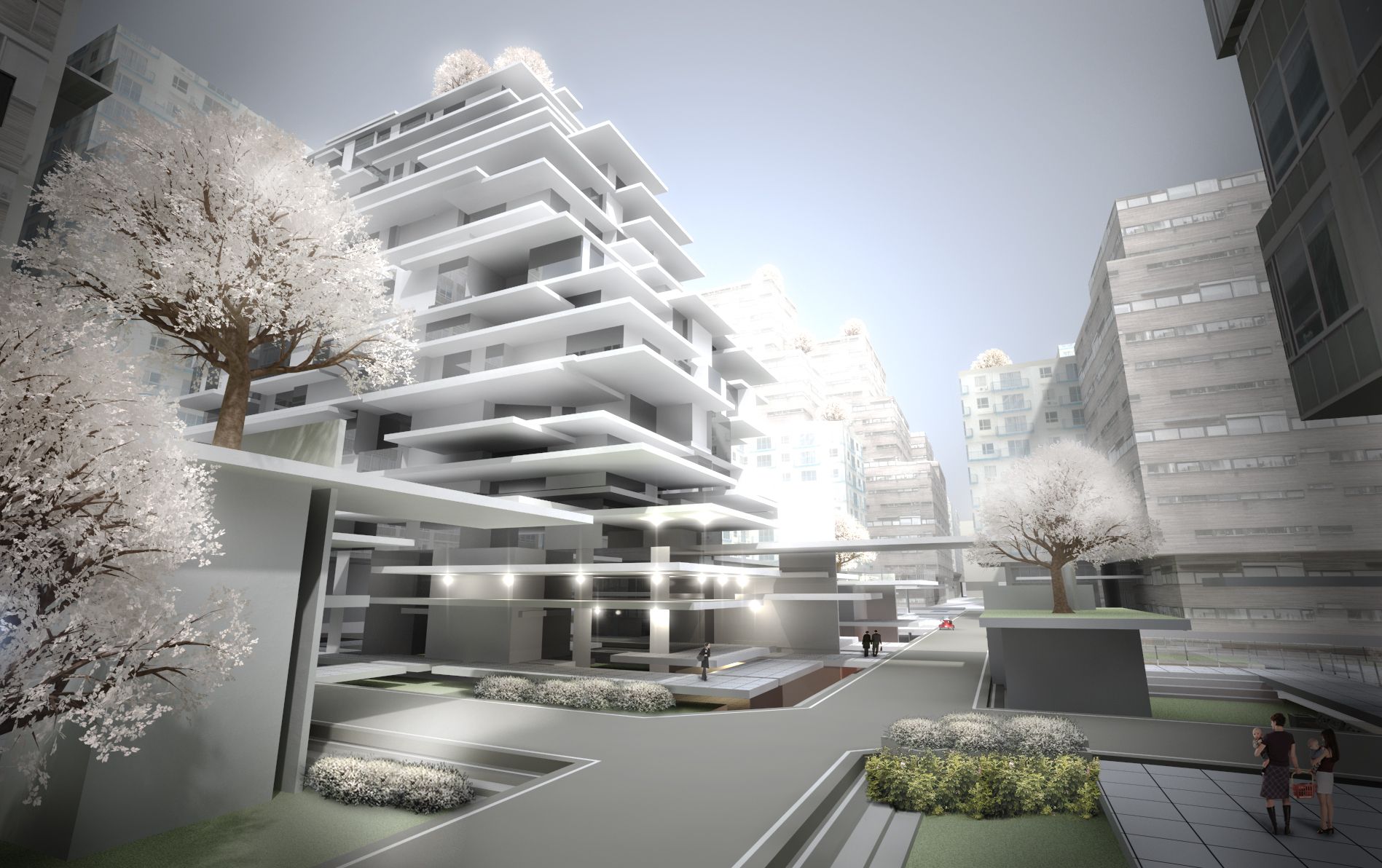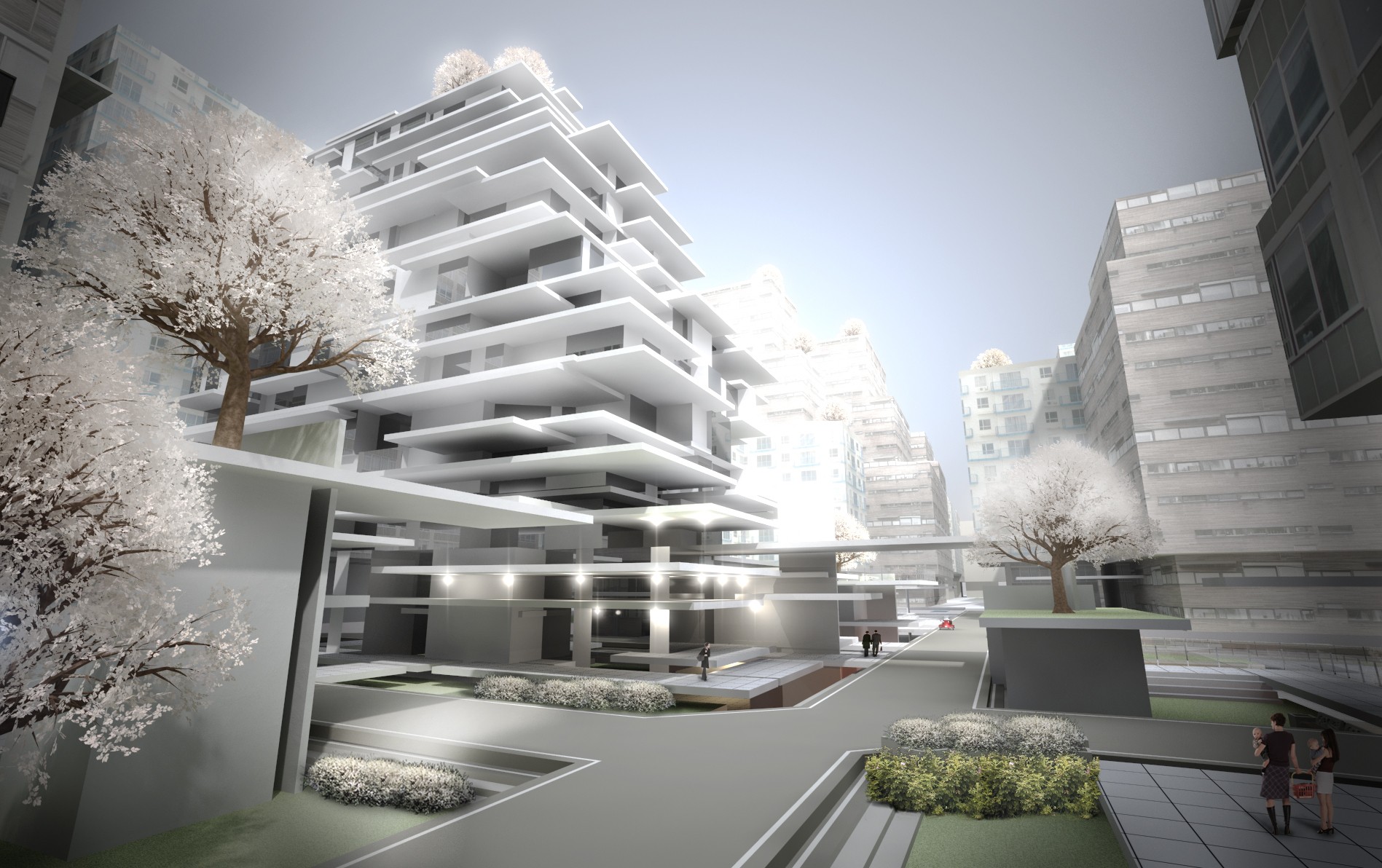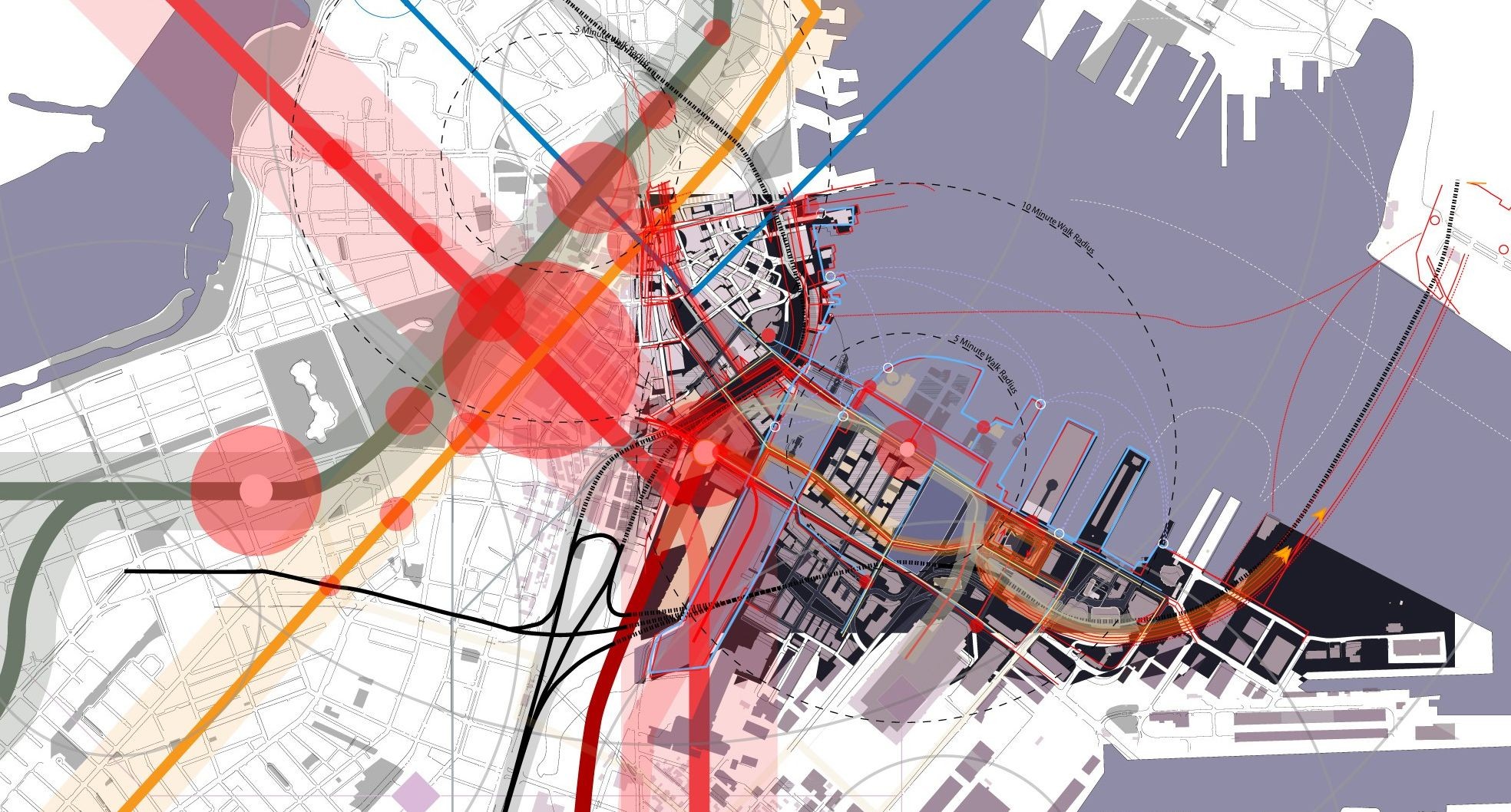

Boston Fort Point Masterplan
Sustainable urban redevelopment
Jan 20, 2007

This concept reinvigorates the redevelopment of Fort Point, Boston, Massachusetts, by proposing a strategy to reduce city-wide traffic congestion and increase property values and liveability that significantly contribute to the city's resilience.
A sustainable city is livable, identifiable, and created by its inhabitants.
Its design must consider local climate, culture, and unique operations. A generic and all-encompassing "sustainable solution" is only an abstract. Any methodology for a sustainable city has merit if it can be applied to real-world situations.
This project addressed this problem by developing a workable program for sustainable decision-making related to density, demographics, logistics, and environmental quality.
Applying this becomes a process rather than a set of rules.
This project generates and applies this process to a 10-acre site in downtown Boston. It is beside the central business district and is currently occupied by parking lots and the Diller Scofidio + Renfro Institute of Contemporary Art.

Research shows that the United States is the largest energy consumer per capita than any other country in the world. Roughly one-third of it goes to transportation, another third to residential use, and the remainder for industrial purposes.
How we design and use our residential neighborhoods and transportation systems can add to or minimize the impact.
The theoretical ecological footprint says if we continue on the current trajectory, we will soon be using more land than exists on earth though this can be reduced.
One such concept that will allow for the drastic change we need is "Deep Change." If we adhere to Deep Change's guidelines, we can reduce our energy demands by more than half and start building more self-sufficient cities.
Deep Change has various guidelines and benchmarks for multiple operations in our lives. For architects and city planners, it means constructing higher density and mixed-use buildings, smaller houses, and locally sourced and environmentally friendly materials. This also means moving away from private motor vehicles and shifting toward vegetarianism in urban areas.
Addressing the overuse and reducing wasted energy in transportation and housing is an area of significant leverage in any city, particularly Boston.
Traffic takes up one-third of the energy use in the US, of which 70% is attributed to the inefficient use of private cars. This outcome is disappointing, particularly compared to countless other cities worldwide and their ability to move people around via alternatives, such as public transport.
When comparing Boston with Copenhagen, we see a reduction in car use by about 400% and a considerable reduction in commuting times by the Danes.
Another example of inefficiency in Boston is density. The city center has approximately 240,000 jobs but only 27,000 inhabitants. A significant amount of energy from transport is directly attributed to this population commuting in private cars.
The most effective way to reduce residential energy use is higher density living. A city's density is often measured by an average floor area ratio (FAR), which takes the total floor area and divides it by land size.
Research shows an ideal floor area ratio (FAR) of around 9, similar to the average FAR ratio in Barcelona.
How can a city's average FAR value be increased? How can we retain a city's ease of living with such high density?
Luckily, there are countless examples, and we can learn from their policies. In addition to Barcelona, Copenhagen and Amsterdam are good examples of dense and livable cities. The first step in realization is addressing flaws in urban development, traffic and housing policies.
Focusing on the quality of spaces from a human perspective assures cities remain livable, despite a higher density population. Our concept produces a vast set of guidelines we can apply to our particular site in downtown Boston.

Applying these principles to the site in Boston shifts the program to more of a residential focus, including retail and office spaces to enhance the use of space and ensure it's moderately self-sufficient.
To have a quality urban environment, a minimum of 20% open space (preferably up to 40%) of the total development area. Eliminating cross streets and covering the large thoroughfare road helps optimize land usage.
AFAR of 9 is achieved much more quickly through sparse high-rise buildings or denser low-rise structures. We combine these to develop a more diverse and flexible arrangement. The height of buildings has been kept low, allowing more sunlight into the streets and ensuring the neighborhood has a more relatable human-size scale.
Regarding structures, there are rules to ensure that standards for a range of different spaces and features, including arcades, green roofs, and natural circulation, are reached. All the guidelines allow for various configurations and adaptability to aspects of local culture.
Car access is restricted to emergency and supply traffic. Instead, bicycle-related infrastructure and an additional subway line to commute downtown merge with the existing and under-used Blue line. Truck routes are maintained in their current form.
Pedestrians are drawn through the site on their way to work or the ICA and convention center through various paths that tie in the existing harbor walk and other places of cultural interest. Open spaces are arranged at the knuckles and alongside these paths.
An area below ground level is utilized to help densify the site. It locates retail, transportation lines, and other related hubs underground, keeping the ground level available for more quality open space, cycling, restaurants, and entertainment. The energy hub for the collection and generation of energy is also on this level, with a limited number of car spaces.
The phasing of the project is carried out in stages relating to each single-tower community. Each phase has many occupants, buildings, and retail spaces, to function in isolation from others. When finalized, the individual steps form a region that is more than the sum of their parts by ensuring shared spaces, environments, and organizational structures.
Jan. 20, 2007
Director